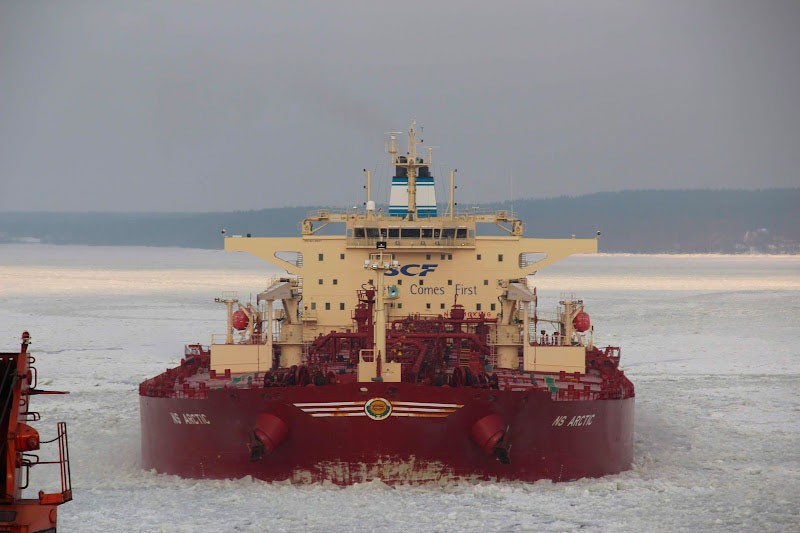Still plenty of sea-ice as Russia sends two major oil tankers through remotest Arctic waters
More than 120,000 tons of crude tons is on its way into one of the toughest shipping routes on earth.

The Primorsky Prospect and NS Arctic both carry Liberian flags and are operated by Russian shipping company Sovcomflot. On the 12th and 14th of July respectively, they set out from St.Petersburg with course for the Chinese ports of Dalian and Rizhao.
On the 26th of July, they were approaching the Vilkitsky Strait, the harsh waters that separates the Russian mainland with the Severnaya Zemlya archipelago.
They will subsequently sail into the Laptev Sea and East Siberian Sea, where there are still significant volumes of sea-ice. Maps from the Arctic and Antarctic Research Institute show that the lion’s share of the area remains covered by white sheet, in places up to one meter thick. The ships are due to reach their Chinese destinations in mid-August.
The Primorsky Prospect and the NS Arctic are both 250 meter long and have a deadweight of 62,000 tons. They have ice classification Arc3, which allows them to sail without icebreaker assistance in light ice conditions.
The Primorsky Prospect is now part of a convoy of six ships following nuclear icebreaker Sibir. In the convoy are also two general cargo vessels, a research vessel and LNG carrier Boris Vilkitsky.
Russia has major ambitions for its Northern Sea Route and intends to open up for year-round shipments. The country has already succeeded in expanding shipping in the western part of the route. But on the eastern part, the waters between the Vilkitsky Strait and the Bering Strait, the ice conditions are far more complicated and shipments remain sparse. During the first half of 2023, only LNG carriers, as well as heavy lift carrier Pugnax, sailed transit through the route.
Following Russia’s full-scale attack on Ukraine and the introduction of stringent international sanctions, the relevance of the Northern Sea Route has increased and Moscow appears ready to take bigger risks in icy Arctic waters.
Early this year, nuclear icebreaker operator Rosatom offered oil companies Lukoil and Gazprom Neft expanded escort across the Northern Sea Route. In summer and fall, the shipments can be made without ice-class tankers, Chemko underlined in a meeting in the Federation Council.
“Unfortunately, we do not yet have large-size tankers with ice-class and therefore we offer our colleagues use of ordinary tankers with a guaranteed level of security, with escort of our icebreakers in the summer- fall season,” he explained.
Located in Kirkenes, Norway, just a few kilometres from the borders to Russia and Finland, the Barents Observer is dedicated to cross-border journalism in Scandinavia, Russia and the wider Arctic.
As a non-profit stock company that is fully owned by its reporters, its editorial decisions are free of regional, national or private-sector influence. It has been a partner to ABJ and its predecessors since 2016.
You can read the original here.